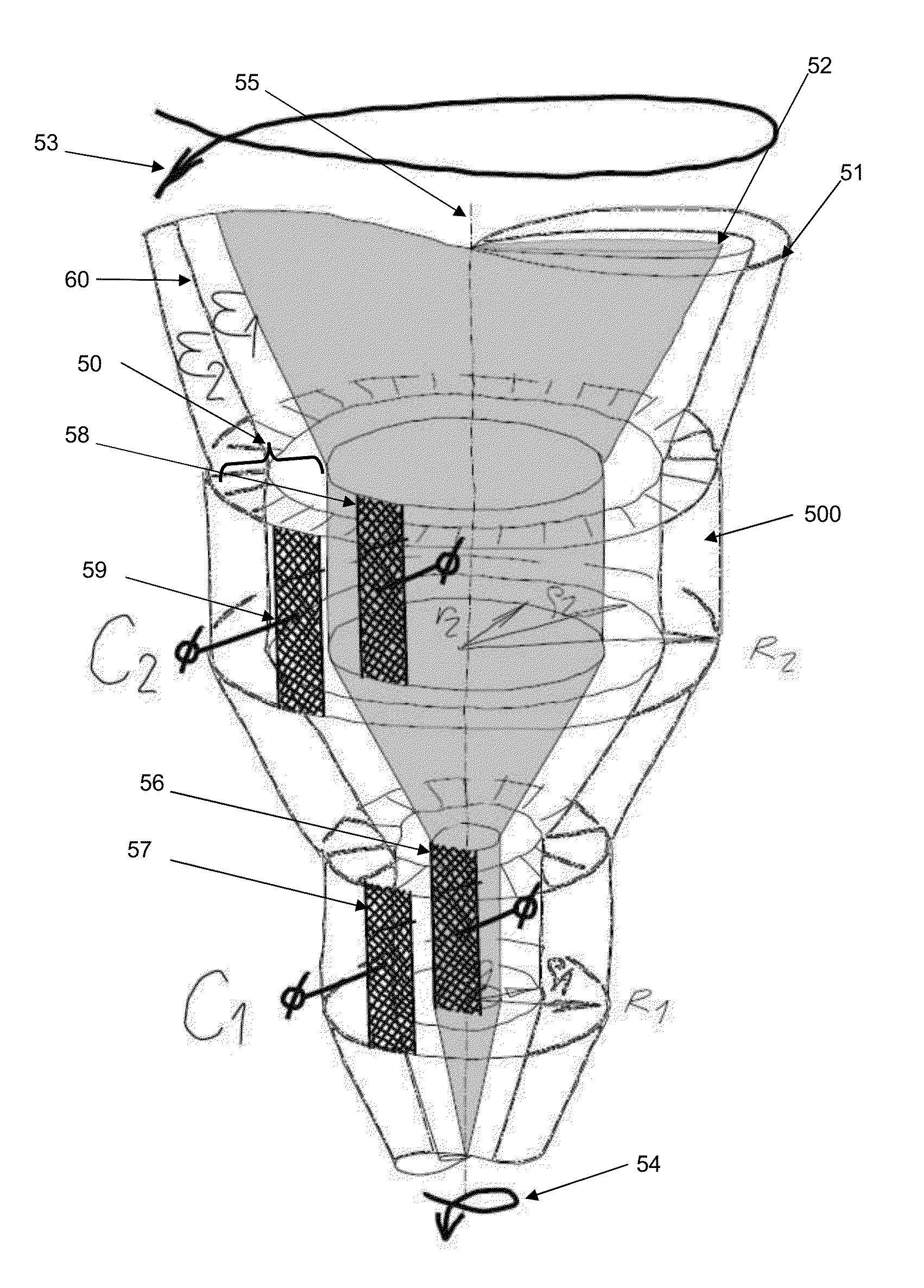Cyclonic sensor for multiphase composition measurement
a multi-phase composition and sensor technology, applied in measurement devices, specific gravity using centrifugal effects, instruments, etc., can solve the problems of less robust solution, less useful production output, and increasing prohibitiveness of optimized production allocation systems
- Summary
- Abstract
- Description
- Claims
- Application Information
AI Technical Summary
Benefits of technology
Problems solved by technology
Method used
Image
Examples
Embodiment Construction
[0045]Certain embodiments of the present invention will now be described in greater detail with reference to the accompanying drawings.
[0046]FIG. 1 shows the general principal of the invention as a cross sectional view of a funnel shaped sensor chamber (11). A multiphase fluid flowing in the direction of the thick input arrow (12) enters the sensor chamber (11) of radius R about an axis (14), and the flow about the axis (14) induces cyclonic motion of the fluid as flows around the inner surface (15) until it passes through the output (13). The centripetal forces of the cyclonic motion encourage stratification of the multiphase fluid, with the less dense fraction (identified by β) disposed towards the center and the denser fraction (identified by α) disposed towards the surface (15) of the funnel shaped sensor chamber (11). Ideally, a sensor chamber input (12) is oriented to encourage cyclonic motion of the fluid as it enters the sensor chamber. The curvature of the sensor chamber is...
PUM
| Property | Measurement | Unit |
|---|---|---|
| ri | aaaaa | aaaaa |
| composition | aaaaa | aaaaa |
| curvature | aaaaa | aaaaa |
Abstract
Description
Claims
Application Information
 Login to View More
Login to View More - R&D
- Intellectual Property
- Life Sciences
- Materials
- Tech Scout
- Unparalleled Data Quality
- Higher Quality Content
- 60% Fewer Hallucinations
Browse by: Latest US Patents, China's latest patents, Technical Efficacy Thesaurus, Application Domain, Technology Topic, Popular Technical Reports.
© 2025 PatSnap. All rights reserved.Legal|Privacy policy|Modern Slavery Act Transparency Statement|Sitemap|About US| Contact US: help@patsnap.com



